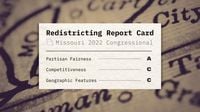The United States is witnessing a dramatic escalation in the long-running battle over congressional redistricting, as partisan maneuvering in Texas and Missouri threatens to upend decades-old norms and spark a nationwide race to redraw political maps ahead of the pivotal 2026 midterm elections.
In Texas, the saga began in earnest on August 14, 2025, when Democratic state legislators fled the state in a high-profile bid to deny the Republican-controlled legislature a quorum. Their goal: to block a mid-decade gerrymander that would hand Republicans several additional seats in Congress. According to The Conversation, the Texas GOP’s push was fueled by President Donald Trump, who is intent on ensuring a GOP-controlled Congress to support his agenda after the 2026 midterms. The move has already inspired other Republican-led states, such as Missouri and Ohio, to consider following suit, while Democratic strongholds like California and Illinois are openly weighing tit-for-tat responses.
But this is more than just a contest for a handful of House seats. As The Conversation notes, the stakes could hardly be higher—or the risks more unpredictable. Political scientists warn that aggressive gerrymandering can backfire, a phenomenon known as “dummymandering.” In their zeal to maximize partisan advantage, parties sometimes spread their voters too thin, creating districts that are vulnerable to flipping in strong years for the opposition. Texas has already experienced this: after a previous round of ambitious redistricting, Republicans lost several Dallas-area seats in 2018, a year that saw a national surge for Democrats.
Governor Greg Abbott, undeterred, has threatened to escalate. “If they don’t start showing up, I may start expanding,” Abbott said, referencing the absent Democrats. “We may make it six or seven or eight new seats we’re going to be adding on the Republican side.” Yet the lessons of the past—and the specter of dummymandering—loom large. With Democrats poised for a potentially strong performance in 2026, Abbott’s gambit carries significant risks for his party.
Meanwhile, Democratic leaders in other states are signaling they won’t stand by quietly. In California, Governor Gavin Newsom is pushing for a special election later this year that could see voters approve new congressional maps designed to offset Democratic losses in Texas. If successful, these changes would take effect before the 2026 midterms. In New York, Governor Kathy Hochul has voiced her frustration with the current system, saying she is “sick and tired of being pushed around” while other states refuse to adopt redistricting reforms. Hochul has even suggested amending the state constitution to eliminate New York’s nonpartisan redistricting commission, a dramatic step that underscores the intensity of the moment.
Illinois Governor J.B. Pritzker has also indicated a willingness to consider new gerrymanders to bolster Democratic representation. The message from blue states is clear: if Republicans are going to play hardball, Democrats are prepared to respond in kind. In the meantime, Democratic governors have welcomed their Texas colleagues, providing housing and support during their self-imposed exile.
Yet the landscape for gerrymandering is not as fertile as it once was. As The Conversation explains, most of the “low-hanging fruit” has already been picked in previous redistricting cycles, particularly after the 2010 and 2020 censuses. Republicans have been especially adept at maximizing their seat shares in competitive states like Wisconsin and North Carolina, while Democrats have done the same in places like Maryland and Massachusetts. But the rise of geographic sorting—Democrats clustering in cities and suburbs, Republicans dominating rural areas—has made it increasingly difficult to draw competitive districts that favor one side without creating vulnerabilities elsewhere.
This brings us to Missouri, where the current congressional map, drawn in 2022, was recently rated an “A” for partisan fairness by the Princeton Gerrymandering Project. The map features six Republican-held seats and two Democrat-held seats, a configuration that Princeton researchers found to be fair when compared to a million possible alternatives. Missouri’s map also scored “C” grades for competitiveness and compactness, reflecting the reality that, while fair, the districts are not especially competitive or geographically tidy.
Despite the high marks for fairness, Missouri is now at the center of the national redistricting storm. Under pressure from President Trump, state lawmakers and Governor Mike Kehoe are considering a mid-cycle redraw aimed at replacing Democratic Representative Emanuel Cleaver with a Republican in 2026. The Missouri Freedom Caucus has called for an extraordinary session to redraw the map “consistent with President Trump’s recommendation,” arguing that conservatives “cannot continue to allow the voice of Missouri’s voters to be diluted by judicial activism, well-funded left-wing ballot campaigns by out-of-state billionaires and weak congressional maps.”
But not everyone in the GOP is on board. Some Republicans worry that a more aggressive map—one that seeks a 7-1 Republican advantage—could backfire by making safe GOP seats more competitive. “I don’t have any reason not to support a 7-1 map other than I want something that is sustainable if we have an off-year for Republicans like we did in 2008,” said Senator Mike Cierpiot, according to The Beacon. He noted that in a bad year for Republicans, such a map could put multiple seats at risk. Rep. Mark Sharp, a Democrat from Kansas City, echoed those concerns, warning that “doing something this ultrapartisan could definitely put a bad spotlight—one could even argue another bad spotlight—on the Republican conference.”
Democrats, for their part, are vowing to fight any midcycle redistricting push. While Texas Democrats fled the state to block a vote, Missouri Democrats say they’ll stay and “make a fuss.” State Senator Maggie Nurrenbern acknowledged the limits of their power, given the GOP supermajority, but said, “we will do everything possible” to stop a 7-1 map from passing. Both Nurrenbern and Sharp have called for reforms to remove redistricting power from the legislature altogether, advocating for a return to nonpartisan map-drawing—a policy Missouri voters approved in 2018 but later repealed.
As the debate rages, Missouri’s experience serves as a microcosm of the broader national struggle. The current round of redistricting is unusual, even unprecedented, with states considering rare mid-decade changes rather than waiting for the next census. The Princeton Gerrymandering Project’s Sam Wang put it bluntly: “We diagnose, and then citizens have to decide what to do about it.” He added, “One good thing about what’s happening in the news right now is that it’s good for citizens to see the kind of cheating that is happening in plain view so it’s front of mind and so everyone can decide what kind of democracy they want.”
With both parties poised to escalate the redistricting arms race, the U.S. could be heading for a chaotic period in which maps are redrawn whenever one side feels disadvantaged, rather than once a decade as tradition—and stability—have long dictated. As the dust settles, Americans will be left to grapple with the consequences for representative democracy and the future of fair elections.





